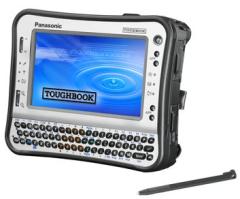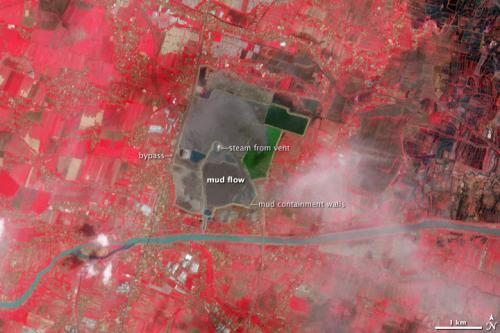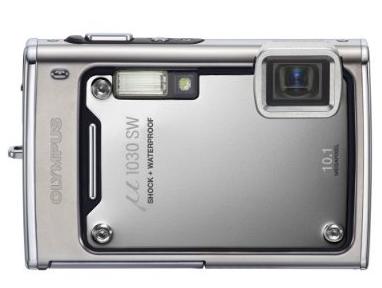Geotripper has started a geology-oriented 100 things meme. Thing’s I’ve done are in bold, with partial credit in italics.
1. See an erupting volcano.
2. See a glacier. [South coast of New Zealand, Alps, Canada.]
3. See an active geyser such as those in Yellowstone, New Zealand or the type locality of Iceland. [Rotorua, New Zealand.]
4. Visit the Cretaceous/Tertiary (KT) Boundary. Possible locations include Gubbio, Italy, Stevns Klint, Denmark, the Red Deer River Valley near Drumheller, Alberta.
5. Observe (from a safe distance) a river whose discharge is above bankful stage. [The river Cam.]
6. Explore a limestone cave. Try Carlsbad Caverns in New Mexico, Lehman Caves in Great Basin National Park, or the caves of Kentucky or TAG (Tennessee, Alabama, and Georgia). [Waitomo Caves, New Zealand; the home of some very cool glowworms.]
7. Tour an open pit mine, such as those in Butte, Montana, Bingham Canyon, Utah, Summitville, Colorado, Globe or Morenci, Arizona, or Chuquicamata, Chile. [A coal mine in Bohemia, Czech Republic, although it was more of a sampling trip than a tour.]
8. Explore a subsurface mine. [A 19th century copper mine in North Wales, and an old gold mine near Barberton, South Africa.]
9. See an ophiolite, such as the ophiolite complex in Oman or the Troodos complex on the Island Cyprus (if on a budget, try the Coast Ranges or Klamath Mountains of California). [I’ve visited an ‘ophiolite’ in Greece, but it wasn’t particularly well-exposed.]
10. An anorthosite complex, such as those in Labrador, the Adirondacks, and Niger (there’s some anorthosite in southern California too).
11. A slot canyon. Many of these amazing canyons are less than 3 feet wide and over 100 feet deep. They reside on the Colorado Plateau. Among the best are Antelope Canyon, Brimstone Canyon, Spooky Gulch and the Round Valley Draw. [In the Blue Mountains of Australia.]
12. Varves, whether you see the type section in Sweden or examples elsewhere.
13. An exfoliation dome, such as those in the Sierra Nevada.
14. A layered igneous intrusion, such as the Stillwater complex in Montana or the Skaergaard Complex in Eastern Greenland. [The Bushveld Complex, South Africa.]
15. Coastlines along the leading and trailing edge of a tectonic plate (check out The Dynamic Earth – The Story of Plate Tectonics – an excellent website). [Assuming that this is just a really weird way of describing active and passive margins, the east coast of New Zealand and the west coast of the UK – and both coasts of South Africa – respectively.]
16. A gingko tree, which is the lone survivor of an ancient group of softwoods that covered much of the Northern Hemisphere in the Mesozoic.
17. Living and fossilized stromatolites (Glacier National Park is a great place to see fossil stromatolites, while Shark Bay in Australia is the place to see living ones) [Never seen them living, but seen fossilised ones in plenty of places, including Archean ones in South Africa and late Neoproterozoic ones in Namibia.]
18. A field of glacial erratics. [in the Canadian Rockies, but there’s lots about in Wales and Scotland, too]
19. A caldera [A couple in SW Spain, and Taupo in New Zealand].
20. A sand dune more than 200 feet high [Sossusvlei in Namibia.]

21. A fjord. [Fjordland, New Zealand.]
22. A recently formed fault scarp. [Assuming ‘recently formed’ stretches to ‘in the last 15 years’, in Greece.]
23. A megabreccia. [In southwest Spain – see third picture down – and the Gwna Melange on Anglesey]
24. An actively accreting river delta. [in Greece.]
25. A natural bridge.
26. A large sinkhole.
27. A glacial outwash plain [Alps and Canadian Rockies.]
28. A sea stack.
29. A house-sized glacial erratic.
30. An underground lake or river.
31. The continental divide.
32. Fluorescent and phosphorescent minerals. [In the Natural History Museum.]
33. Petrified trees.
34. Lava tubes. [On Rangitoto Island, just offshore from Auckland, New Zealand].
35. The Grand Canyon. All the way down. And back. [I only got down to the bottom of the outer canyon.]
36. Meteor Crater, Arizona, also known as the Barringer Crater, to see an impact crater on a scale that is comprehensible.
37. The Great Barrier Reef, northeastern Australia, to see the largest coral reef in the world.
38. The Bay of Fundy, New Brunswick and Nova Scotia, Canada, to see the highest tides in the world (up to 16m).
39. The Waterpocket Fold, Utah, to see well exposed folds on a massive scale.
40. The Banded Iron Formation, Michigan, to better appreciate the air you breathe.. [BIFs don’t just occur here, and I’ve seen a fair number in South Africa, including in one of my field areas – scroll to the bottom.]
41. The Snows of Kilimanjaro, Tanzania,
42. Lake Baikal, Siberia, to see the deepest lake in the world (1,620 m) with 20 percent of the Earth’s fresh water.
43. Ayers Rock (known now by the Aboriginal name of Uluru), Australia. This inselberg of nearly vertical Precambrian strata is about 2.5 kilometers long and more than 350 meters high.
44. Devil’s Tower, northeastern Wyoming, to see a classic example of columnar jointing.
45. The Alps.
46. Telescope Peak, in Death Valley National Park. From this spectacular summit you can look down onto the floor of Death Valley – 11,330 feet below.
47. The Li River, China, to see the fantastic tower karst that appears in much Chinese art.
48. The Dalmation Coast of Croatia, to see the original Karst.
49. The Gorge of Bhagirathi, one of the sacred headwaters of the Ganges, in the Indian Himalayas, where the river flows from an ice tunnel beneath the Gangatori Glacier into a deep gorge.
50. The Goosenecks of the San Juan River, Utah, an impressive series of entrenched meanders.
51. Shiprock, New Mexico, to see a large volcanic neck.
52. Land’s End, Cornwall, Great Britain, for fractured granites that have feldspar crystals bigger than your fist.
53. Tierra del Fuego, Chile and Argentina, to see the Straights of Magellan and the southernmost tip of South America.
54. Mount St. Helens, Washington, to see the results of recent explosive volcanism.
55. The Giant’s Causeway and the Antrim Plateau, Northern Ireland, to see polygonally fractured basaltic flows.
56. The Great Rift Valley in Africa.
57. The Matterhorn, along the Swiss/Italian border, to see the classic “horn”.
58. The Carolina Bays, along the Carolinian and Georgian coastal plain
59. The Mima Mounds near Olympia, Washington
60. Siccar Point, Berwickshire, Scotland, where James Hutton (the “father” of modern geology) observed the classic unconformity. [I’ve visited the equivalent contact on the Isle of Arran.]
61. The moving rocks of Racetrack Playa in Death Valley
62. Yosemite Valley
63. Landscape Arch (or Delicate Arch) in Utah
64. The Burgess Shale in British Columbia
65. The Channeled Scablands of central Washington
66. Bryce Canyon
67. Grand Prismatic Spring at Yellowstone
68. Monument Valley
69. The San Andreas fault
70. The dinosaur footprints in La Rioja, Spain
71. The volcanic landscapes of the Canary Islands
72. The Pyrennees Mountains
73. The Lime Caves at Karamea on the West Coast of New Zealand
74. Denali (an orogeny in progress)
75. A catastrophic mass wasting event
76. The giant crossbeds visible at Zion National Park [I’ve not been to Zion but have seen giant crossbeds in the same area.]
77. The black sand beaches in Hawaii (or the green sand-olivine beaches)
78. Barton Springs in Texas
79. Hells Canyon in Idaho
80. The Black Canyon of the Gunnison in Colorado
81. The Tunguska Impact site in Siberia
82. Feel an earthquake with a magnitude greater than 5.0. [There was a magnitude 5.4 in the Netherlands when I was there in 1992. I woke up to the room shaking, figured that I was dreaming because everyone knows that you don’t get earthquakes in the Netherlands, and went straight back to sleep.]
83. Find dinosaur footprints in situ [Somewhere on the Jurassic Coast of southern England].
84. Find a trilobite (or a dinosaur bone or any other fossil)
85. Find gold, however small the flake
86. Find a meteorite fragment
87. Experience a volcanic ashfall
88. Experience a sandstorm.
89. See a tsunami.
90. Witness a total solar eclipse [I was just a little bit too far north in the UK in 1999 to see a total eclipse, but it was pretty close.]
91. Witness a tornado firsthand (Important rules of this game).
92. Witness a meteor storm, a term used to describe a particularly intense (1000+ per minute) meteor shower
93. View Saturn and its moons through a respectable telescope.
94. See the Aurora borealis, otherwise known as the northern lights.
95. View a great naked-eye comet, an opportunity which occurs only a few times per century. [Hale-Bopp in 1997]
96. See a lunar eclipse.
97. View a distant galaxy through a large telescope
98. Experience a hurricane. [The Great Storm of 1987 had hurricane-strength winds, although I understand it was not technically a true hurricane.]
99. See noctilucent clouds
100. See the green flash
This list has a lot of specific US localities on it, which might partially explain my low(ish) score – although I’m quite disturbed to be towards to bottom of the geoblogosphere on this one (Update: not to mention being soundly trumped by some non-geologists). Is relegation looming?
The Geoblogospheric league table:
Callan 67
Geotripper 65
Lockwood 62
Seablogger 56
Silver Fox 56
SciGuy315 53
ReBecca 50
Kim 49
Crysallizations 44
Christie 42
Bryan 39.5
Hypocentre 39
Me 38
Brian 37
Zeolite 36
Volcanista 34
Julia 33
Short Geologist 33
Lost Geologist 29
Suvrat 28
Maria 27.5
John McKay 26
Tuff Cookie 26
Saxifraga 25.5








Nice plan for content warnings on Mastodon and the Fediverse. Now you need a Mastodon/Fediverse button on this blog.